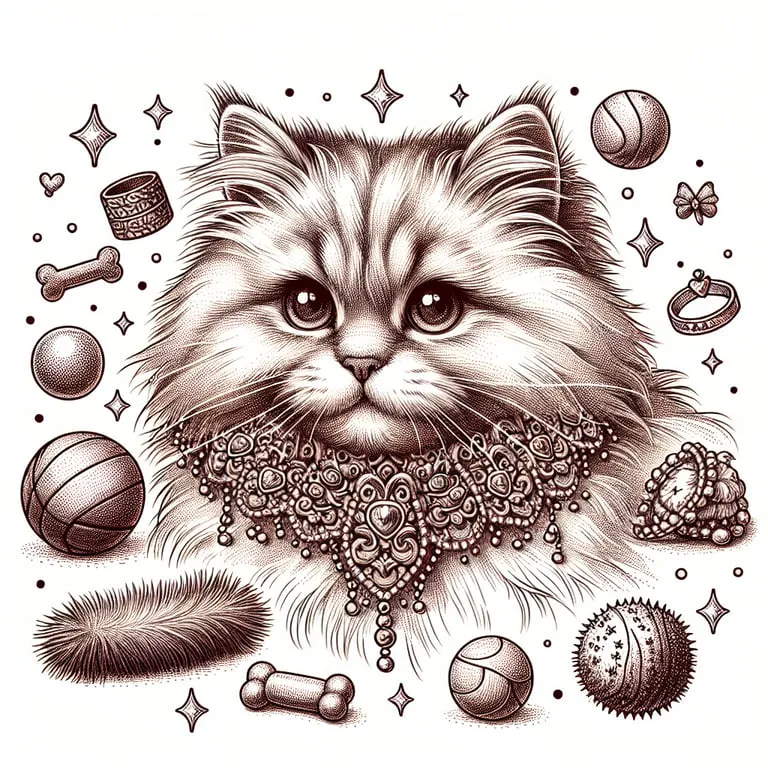In 2025, pet accessories are skyrocketing, driven by the influence of social media and increased humanization of pets. But are these products truly beneficial to animals or primarily catering to human vanity?

Pet Ownership Trends and Financial Implications
Statistics Underlining Pet Ownership
More than half of Britain’s population owns pets, reflecting deep cultural ties and the importance of these non-human companions in everyday life. This prevalent trend mirrors global patterns where pet ownership is more than just a hobby but a lifestyle choice.
Spending Patterns and Market Growth
Pet owners are notably spending extravagantly, surpassing childcare and dating expenses. Nationwide reports indicate that £52 million has been spent on pets, with the pet clothing industry projected to hit a significant milestone of $7 billion by 2032. This financial commitment underscores a trend where the line between essential care and indulgence increasingly blurs.
Influence of Social Media and ‘Petfluencers’
The Role of Social Media
The rise of pet influencers — or “petfluencers” — has amplified trends in pet fashion. Instagram, at the forefront, showcases pets in exquisite attire, exerting substantial influence over consumer preferences and market trajectories. Yet, this aesthetic focus often overshadows the reality of pets’ comfort and needs.
Concerns from Experts
Despite the market’s spectacle, experts voice apprehension regarding the well-being of pets subjected to extensive accessorizing. Constrictive clothing can hinder natural behavioral expression, causing unnecessary distress, particularly in felines. For garments perceived as practical, such as those offering warmth, the emphasis should lie on functionality rather than fashion.
Balancing Aesthetic Appeal with Functionality
Tackling Pet Anxiety with Accessories
Accessories claiming to enhance quality of life, like the ThunderShirt jacket, aim to attenuate anxiety in dogs. While anecdotal evidence suggests benefits, proper training and behavior modification remain indispensable. Pet owners must engage critically with product claims, ensuring genuine alignments with their pets’ needs.
Outdoor Adventures with Indoor Cats
As indoor-only cats face increased confinement, accessories such as harnesses and bubble backpacks are becoming prevalent. However, the introduction to these should be meticulous and tailored, prioritizing minimal stress and maximal comfort, particularly when introducing cats to new experiences.
Grooming and Wellness: Health or Indulgence?
Grooming Products and Ethical Considerations
The grooming market offers a vast array of products, from shampoos to dyes, all promising enhanced aesthetics. Yet, overuse can harm pets, as their skin differs significantly from humans. Vets emphasize function over form: grooming should prioritize hygiene and health rather than anthropomorphic beauty standards.
Wellness Trends Mirroring Human Fads
With the surge of pet-wellness products parallel to human trends, including probiotics and other supplements, caution is advised. A balanced diet generally suffices for pet nutritional needs, and unwarranted supplementation can entail unnecessary risks. Consultation with a veterinary professional should precede any dietary changes.
Humanizing Pets: The Line Between Care and Indulgence
Anthropomorphic Products in the Market
The marketplace now features products like pet-friendly ice creams and wines, appealing to owners’ desires to humanize their pets. While the novelty is tempting, the benefits to pets remain questionable. The goal should always be genuine enhancement of pet well-being rather than satisfying human whims.
In conclusion, while the pet accessory market proliferates, driven by social media’s influence and evolving cultural perceptions, pet owners must critically evaluate the necessity of these products. The responsibility lies in discerning between genuine care and human indulgence, always prioritizing the mental and physical welfare of pets over fleeting trends or personal gratification.
https://www.petmediapress.com/